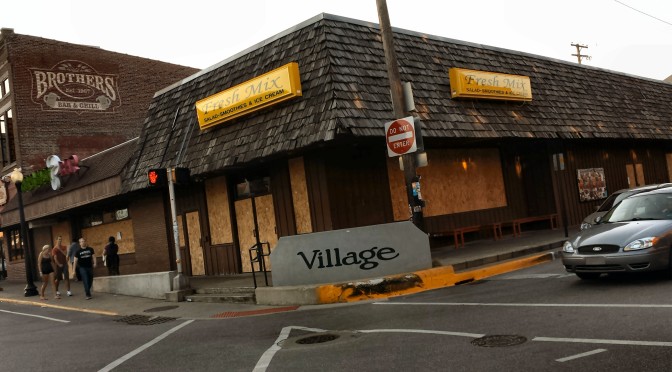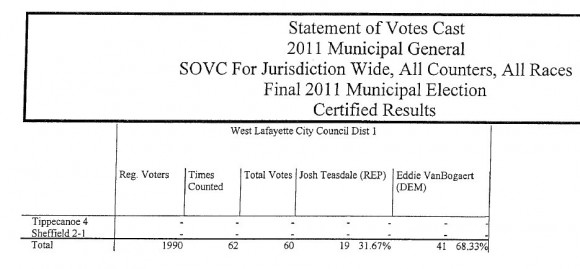In Brian Howey’s Increasingly urban Indiana article, he ends with an obtuse zinger:
A politician can’t be as blunt as I will be here: If you don’t want to be part of a city and pay for services you receive or the residual benefits, then don’t live near a city.
Prior in the article, Howey discusses the economy of cities, annexation, and the tension between residents and municipalities who remonstrate. As an example, he talks about Elkhart, Indiana’s recent City Council meeting (I just called and made a public records request for the audio):
So it’s interesting to watch the latest annexation showdown in Elkhart, where Mayor Dick Moore has moved to incorporate three areas. The response has been three lawsuits. When the Elkhart City Council chambers were packed with remonstrators on Dec. 1, Elkhart Truth reporter Sarah Duis tweeted, “About 10 people have spoken against the request so far. Overarching theme: Don’t spend taxpayer money on something we don’t want.”
And now we have a full cycle of the argument; taxes.
Howey quoted Mayor Greg Goodnight of Kokomo regarding the most recent round of annexation in the City.
“I would call this one a proactive annexation,” Goodnight told the Tribune. “With the state finishing the new U.S. 31 at the end of next year, we need to make sure that city residents and city property owners have their interest protected by development along that new (U.S.) 31.”
In West Lafayette, a similar argument was given (among a few others, such as Second Class City status) for its most recent round of annexation, in our case, it was regarding the recently finished US 231 bypass. In the Journal and Courier’s June 19th, 2014 article, West Lafayette annexation plans changed after strong neighborhood opposition, Mayor Dennis commented on his view of the corridor:
“This map is where we’re moving forward to,” Dennis said. “The gold mine, the logic for economic development, the reason for us even to consider annexing to the west is the (U.S.) 231 corridor. … Our purpose is growth. Our purpose is economic development. And our purpose is to make this a better community.”
Thankfully, Howey acknowledges that development post-annexation does not always lead to inspired urban planning:
The old U.S. 31 “bypass” in Kokomo a half century ago resulted in dozens of traffic lights and an array of scattershot, unplanned strip development.
Look at the way US 52 was developed on both sides of the river. The Crew’s Carwash Subdivision (formerly Mike’s) was a tremendously missed opportunity, settling for an obscenely large car wash, and a few strip center buildings. To create more pockets of enjoyable urbanity, some mixed used buildings could have served those same commercial tenants with a built-in customer base and in addition, serve the neighbors in Wabash Shores.
I am fearful that US 231 will succumb to the same fate unless a comprehensive plan, created with the Community, is made in the near future.
I do, however, enjoy the recently created IU Arnett Urgent Care in the same area. A Franciscan Urgent Care also has surfaced to the West in the strip center that used to contain Good Will (now near ALDI). Now there are plans for the Francisan Alliance to build a hospital along the new US 231.
State Street suffers from some post Chauncey development that makes it beautiful and horrendous simultaneously. The State Street Master Plan mainly addresses transportation, leaving an overlay component of aesthetics, quality, and execution on the table. In light of the recent conversations we had with public art in Lafayette, I hope we can bring the same rhetoric to our development conversations and debates.
Recent developments in the area have been constructed with uninspiring architecture and sometimes without commercial opportunity on the ground floor. Thankfully, the Grantstreet Station rezoned from a PDRS to a PDMX in December, allowing for commercial opportunities in a densely residential area.
Now the struggle becomes with what types of businesses will inhabit this space. Will they be more chain and franchise businesses, or will they become landmarks of note, drawing the often talked about tourism dollars that Indiana needs.
I am in favor of building more densely urban areas in our Cities, in favor of supporting mixed use zoning, and developing for non-automobile traffic. As Margy Deverall said in her Want better biking, walking here? Speak up piece:
Simply put: If you plan for cars and traffic, you get cars and traffic; if you plan for people and places, you get people and places.
To put it bluntly, let us not develop our Cities and County in such a way that they are only tenable with automobiles. Let us, instead, develop them with the intentional purpose of creating places that people, inside and outside of our community, can enjoy by foot, bicycle, or mass transit.
Then maybe we can more easily convince people to become a part of the City.



